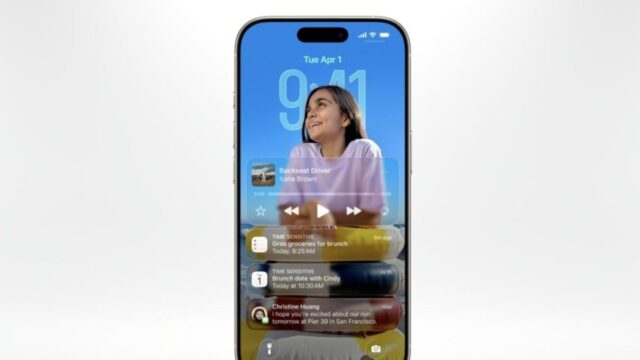During its annual Worldwide Developers Conference (WWDC), Apple has unveiled iOS 26, the next version of its iPhone operating system. The iOS 26 comes with a complete redesign, and Apple calls it the “Liquid Glass” design.
It is important to note that iOS 26 is the successor to iOS 18. The company is skipping several numbers to make it based on the year following their introduction. This change applies across the board: macOS, iPadOS, watchOS, tvOS, and visionOS are all taking on the “26” suffix. It will also be easier for users to know whether their device’s software is current.
The brand-new “Liquid Glass” will offer a more modern and fluid look. It also offers a transparent aesthetic that provides a different kind of experience. The time display now expands to fill more of the screen, giving it a cleaner and bolder appearance. On the Lock Screen, the time now adapts to the available space in an image for a more dynamic feeling
Apple has simplified the camera app interface by hiding many controls. In Safari, webpages now appear edge-to-edge, and the floating tab bar gives a more immersive browsing experience.
The Phone app is getting useful AI-powered features. It now has a single tab showing recent calls, favorites, and voicemail. The new call screening tool can answer calls on your behalf or even wait on hold for you. In the Messages app, users can now personalize conversations with custom backgrounds, including images from Apple or ones created with Image Playground.

This is the second major iOS release that includes Apple Intelligence. The iOS 26 aims to bridge that gap, although Apple is still gradually rolling out the full AI experience. Apple has also confirmed that we will have to wait a bit longer for smarter Siri. Apple is focusing on on-device AI that works faster and more privately. It helps with messaging, productivity, and daily tasks without sending your data to the cloud.
You can now create new emojis by merging two existing emojis using Genmoji, instead of just typing a description. The Image Playground also gets better. It can now create images with help from OpenAI’s ChatGPT.
A big new feature is Live Translation, powered entirely by Apple Intelligence running on your device. This lets you translate conversations in real time, whether in text messages, phone calls, or FaceTime. Developers will also get an API to add Live Translation to their own apps.
Apple Music now supports lyrics translation and pronunciation, so you can sing along better. The new AutoMix feature smoothly transitions songs like a DJ. You can also pin your favorite artists and playlists to the top of the app for quick access.

Apple Maps is smarter too. It learns your favorite routes and sends notifications about delays or traffic. You can also look back at places you’ve visited and share them with friends more easily.
Starting this fall, Apple Wallet will let you create a digital ID. Boarding passes will get a fresh look and let you access indoor airport maps. Apple Pay gets an upgrade too. It can now use Apple Intelligence to track your orders, even those made outside Apple Pay.
Apple introduces Visual Intelligence, which helps you learn more about what you see on your iPhone screen. For example, if you see a jacket in a photo, you can take a screenshot and use Visual Intelligence to search for that jacket online. You can also screenshot an event and quickly add it to your calendar. Plus, you can ask ChatGPT about anything on your screen for instant answers.
Apple has also introduced a new Games app, which replaces Game Center. This app becomes the main hub for all things gaming. It includes access to Apple Arcade, multiplayer options, and a dedicated storefront for games. It makes gaming on iPhone more organized and easier to manage.

















































